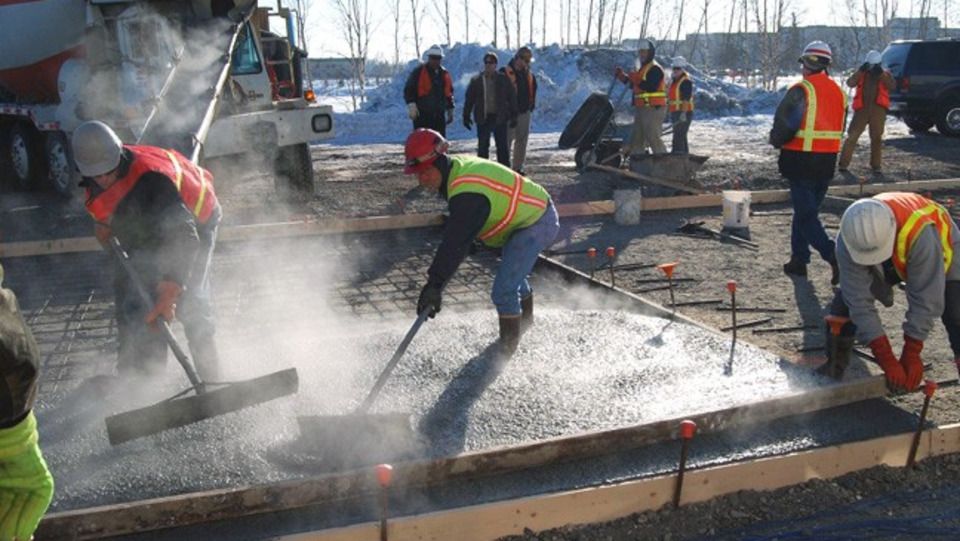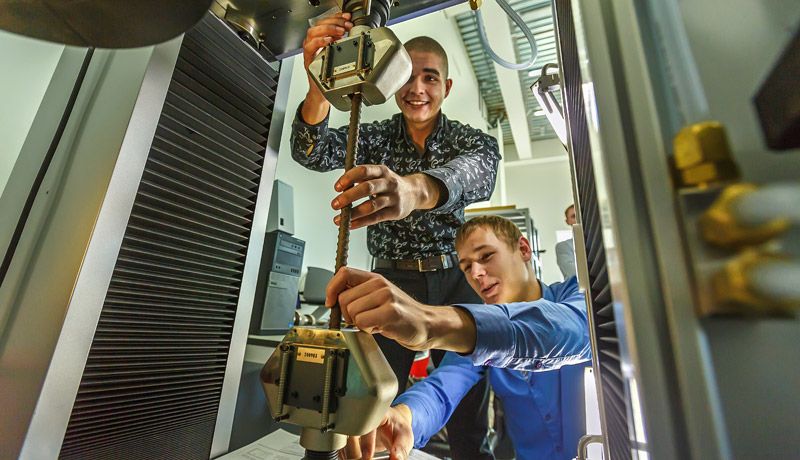While the original recipe dates back to the time of ancient Rome, the process for making concrete is not as easy as simply mixing the raw materials together.
Instead, an ‘aggregate’ of fine powder and coarse rock particles must be mixed well with cement and water, before a thorough and uniform drying or ‘curing’ time can begin.
While the concrete is setting, it is important that the whole body of the concrete dries out at the same pace.
As Yaghoob Farnam, Ph.D., an assistant professor at Drexel's College of Engineering and an expert in the field of construction materials explains, “This [uniform drying] is a very important part of the [concrete production] process because if the concrete dries too quickly during its curing, due to added water shortage, it can form cracks and other flaws. These drying shrinkage cracks cause the surface to be susceptible to aggressive fluid ingress creating concrete durability problems such as corrosion, salt damage, or freeze-thaw damage.”
Over time, this can lead to structural failure and building collapse.

With such a precise process for concrete curing even in mild conditions, spare a thought for construction workers in extreme climates.
Understanding this challenge, a team of material scientists from the Far Eastern Federal University Military training center (FEFU) in Vladivostok, Russia, have been studying how to improve the raw materials for making concrete in sub-zero temperatures.
Working alongside researchers from the Moscow-based RUDN University, they discovered a concrete mixture with nano additives that improves concrete casting when the temperature is as low as minus five degrees Celsius.

The nanomaterials also make concrete curing possible in very humid conditions, with the researchers claiming that when dried the new mixture is strong enough to withstand extreme conditions without ‘major renewal for 50 years.’
As the nanotechnology journal Nanowerk, explains, “Casting concrete under low-temperature conditions is a serious challenge for the construction industry.” To solve this, the team created a new mix, with, “… components already well known in the construction industry, the properties of which they improved with nanoparticles. Thus, they have strengthened naphthalene formaldehyde resin by the properties of [nanoscale] silicon dioxide, with the resulting concrete turning out to be stronger [and] maintaining operational characteristics longer.”
The study has now been published in the journal Construction and Building Materials, where the team highlight how, “The originality of these additives lies in a complex of four components: sulfo-naphthalene-formaldehyde based superplasticizer (SNF), amorphous nano-silica (nano-SiO2), saponified wood resin (WSR), antifreeze inhibitor (NaNO3). The selected ratio of plasticizing, stabilizing, air-entraining and antifreeze components ensures a stable physical and mechanical properties in terms of strength and workability without segregation.”
This breakthrough is another in a long line of discoveries, not only for nanomaterial use, but also for concreting. The last decade seeing numerous developments and improved combinations of raw materials, either to improve construction strength or to lower price.

This new sub-zero concrete mixture contains the same high-performance raw materials as other cutting-edge concretes, using ash from power stations in place of some cement and screening of crushing sand; both of which lower the environmental impact of concrete production.
To learn more about alternative raw materials for concrete and construction, read: Waste Coal Ash found to be Excellent Raw Material for Concrete.
Furthermore, the new concrete contains all of the properties required in modern construction.
“The characteristics of the new nano mixture meet the needs of civil engineering and generally exceed regulatory requirements,” explains Lt. Col. Roman Fediuk, a professor at the FEFU MTC and one of the study’s authors. “The mixture is suitable for casting of civil structures up to 10 stories high under humidity conditions. That makes it relevant for construction in humid continental, monsoon and moderately cold climates. The mixture cures quickly, and the outcoming concrete slab has a dense structure with no lumping and with a pore size smaller than in conventional concrete. Thus, moisture, which destroys ordinary concrete, is not capable of penetrating this new one.”
The new concrete mixture also uses 40 percent less water yet boasts increased strength. The product’s high density and gel pore size are achieved not only because of nano-additives, but also through the use of finer concrete particles which have been ground down into a powder.
Such is the team’s confidence in their nanomaterial concrete, that they have already tested it out by building a five-storey car park. The concrete was cured over a period of 28 days when the temperature ranged from plus five to minus 6 degrees, with the construction surpassing all safety standards.

With the growth of towns and particularly oil and gas extraction facilities in Siberia and the Arctic Circle, the need for construction materials that can withstand extreme weather conditions is becoming ever-more paramount.
With this in mind, the team are continuing to analyse nanomaterials in concrete and are now working on a mix that can cure at minus 15 degrees Celsius while maintaining strength and durability.
Meanwhile, this present discovery remains an addition to the list of benefits that nanomaterials provide. Further evidence, if needed, of how those who want to build bigger and better, should look smaller.
Photo credit: Forconstructionpros, Concreteconstruction, DVFU, Maturix, & Energystar
